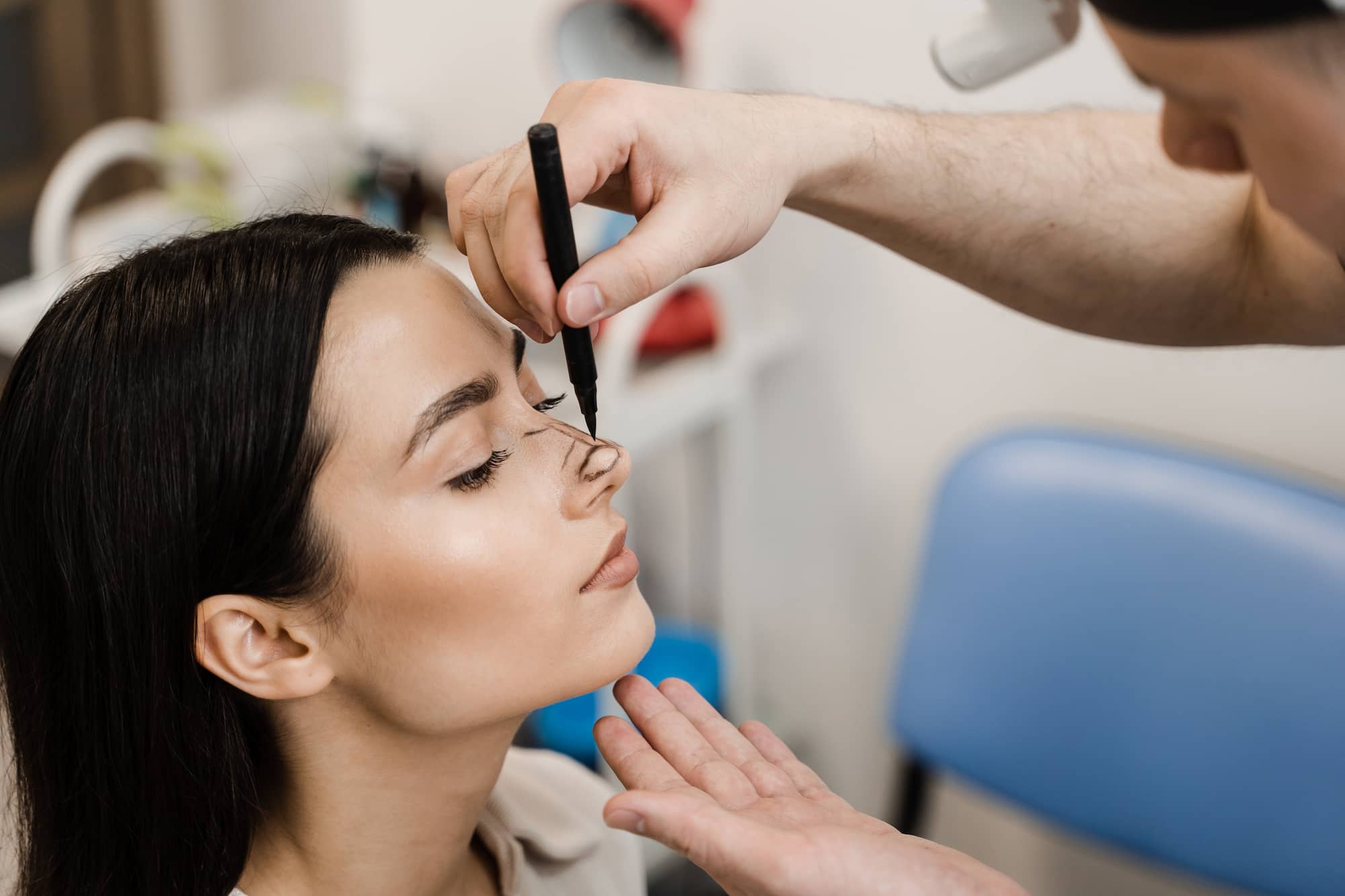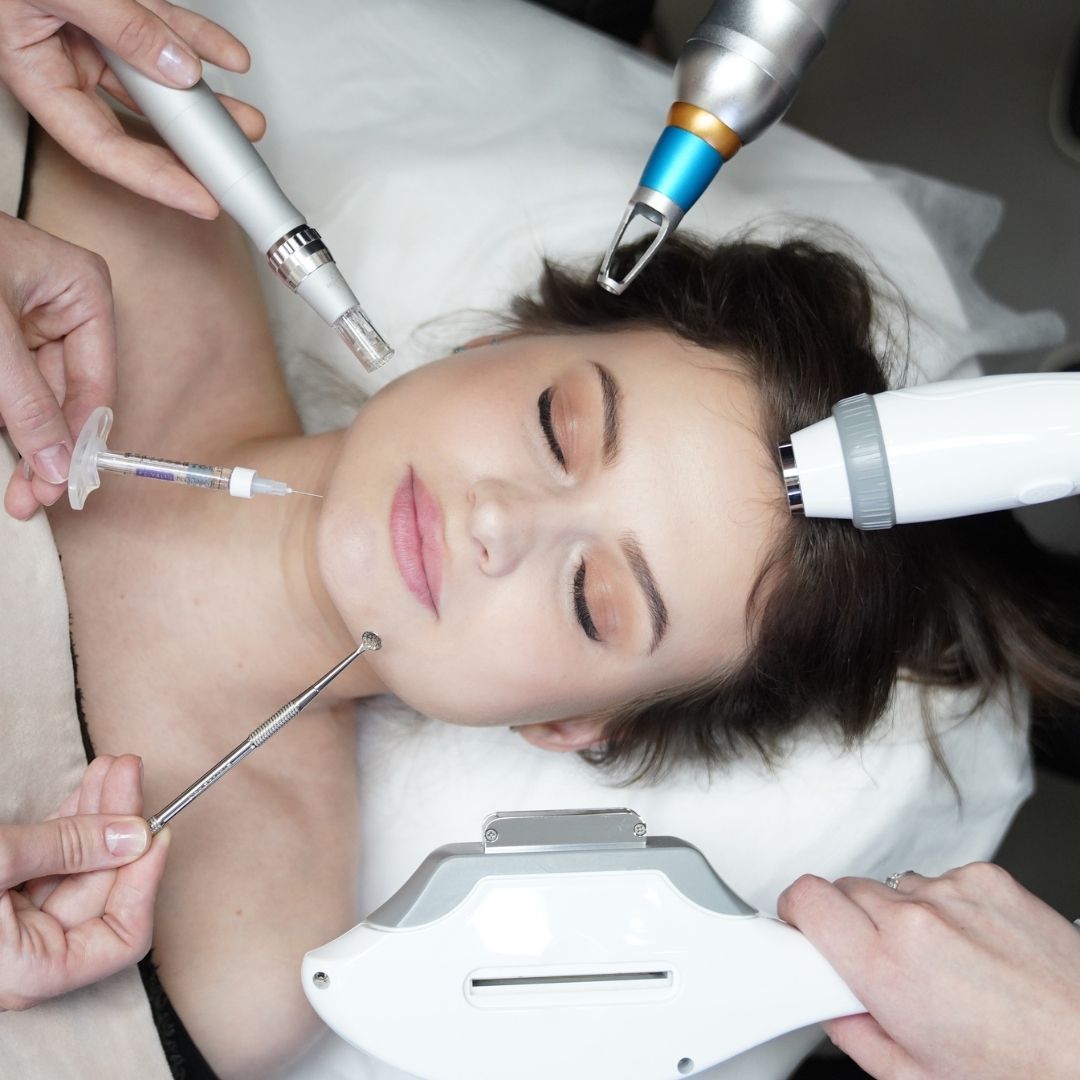
Difference Between Rhinoplasty and Septoplasty
When it comes to surgical procedures on the nose, there are two common terms that are often used: rhinoplasty and septoplasty. While both procedures involve surgery on the nose, they serve different purposes. Rhinoplasty is primarily focused on improving the appearance of the nose, while septoplasty is focused on correcting a deviated septum that can cause breathing difficulties.
In this article, we will explore the differences between rhinoplasty and septoplasty, including their purposes, recovery periods, potential risks and benefits, and what patients can expect during and after the procedures. By understanding the key differences between these procedures, patients can make an informed decision about which option is right for them.
What is Rhinoplasty?
Rhinoplasty, commonly referred to as a nose job, is a surgical procedure performed to enhance the appearance of the nose. This procedure can also be performed to correct structural defects, such as a deviated septum or a broken nose, which can cause breathing problems. Rhinoplasty can change the shape, size, and angle of the nose, making it more aesthetically pleasing and improving overall facial harmony.
The procedure is typically performed under general anesthesia and can take several hours to complete. The surgeon will make incisions either inside the nose or on the outside, depending on the extent of the changes being made. They will then reshape the bone and cartilage, sometimes adding tissue grafts to achieve the desired outcome. After the surgery, patients may experience swelling and bruising, which can last for several weeks. Pain medication is typically prescribed to manage any discomfort.
What is Septoplasty?
Septoplasty is a surgical procedure performed to correct a deviated septum, which is a common structural defect that can cause breathing problems. The septum is the wall of bone and cartilage that divides the nasal cavity into two separate passages. When the septum is crooked or misaligned, it can obstruct airflow and cause congestion, snoring, and other breathing difficulties.
During septoplasty, the surgeon will make an incision inside the nose and remove or reshape the deviated portion of the septum. The procedure is typically performed under local or general anesthesia and can take between 30 minutes to an hour to complete. After the surgery, patients may experience swelling and congestion, which can be managed with pain medication and nasal sprays.

Septoplasty vs Rhinoplasty
Septoplasty and rhinoplasty are two surgical procedures that are performed on the nose, but they serve different purposes.
Septoplasty is a surgical procedure that is performed to correct a deviated septum, which is a common structural abnormality that can cause breathing problems. The septum is the cartilage and bone that separates the two nostrils, and when it is deviated, it can cause one or both nostrils to become blocked, leading to breathing difficulties. During a septoplasty, the surgeon makes an incision inside the nose and removes or reshapes the deviated portion of the septum to improve airflow through the nostrils.
Rhinoplasty, on the other hand, is a surgical procedure that is primarily performed to improve the appearance of the nose. This procedure can involve reshaping the bone and cartilage of the nose to correct deformities, reduce the size of the nose, or improve the overall aesthetic appearance of the nose. Rhinoplasty can also be performed to correct functional problems, such as breathing difficulties, that are related to the shape or structure of the nose.
While there is some overlap between the two procedures, they are not interchangeable. Septoplasty is focused on correcting structural abnormalities that can cause breathing problems, while rhinoplasty is primarily focused on improving the appearance of the nose. In some cases, the two procedures may be performed together to correct both functional and aesthetic concerns.
The recovery period for each procedure can also vary. In general, septoplasty has a shorter recovery period than rhinoplasty, with most patients able to return to work or school within a week after surgery. Rhinoplasty, on the other hand, may require a longer recovery period, with some patients experiencing swelling and bruising for several weeks after surgery.
While both septoplasty and rhinoplasty involve surgery on the nose, they serve different purposes. Septoplasty is focused on correcting structural abnormalities that can cause breathing problems, while rhinoplasty is primarily focused on improving the appearance of the nose. Patients should discuss their concerns and goals with their surgeon to determine which procedure is right for them and follow their surgeon’s instructions for post-operative care to ensure a smooth recovery process.
Rhinoplasty vs Septoplasty Recovery
The recovery process for rhinoplasty and septoplasty can vary depending on the extent of the surgery and individual factors, such as overall health and age. Generally, patients can expect some swelling, bruising, and discomfort in the days following surgery, which can be managed with pain medication and cold compresses.
In the case of septoplasty, patients may experience nasal congestion and discharge as the tissues heal. It is important to avoid blowing the nose or using straws for at least a week after surgery to avoid putting pressure on the healing tissues. Patients should also avoid strenuous activities for several weeks after surgery to prevent complications.
The recovery process for rhinoplasty can take several weeks to several months, depending on the extent of the procedure and the individual’s healing process. During this time, patients should avoid any activities that could potentially cause trauma to the nose, such as contact sports or heavy lifting. Patients should also follow their surgeon’s instructions for post-operative care, which may include taking antibiotics to prevent infection, using saline nasal sprays to promote healing, and avoiding smoking or secondhand smoke.
In general, most patients can return to work or school within a week after surgery, although it is important to avoid any strenuous activity or heavy lifting for several weeks. Full recovery from rhinoplasty can take several months, during which time patients should continue to follow their surgeon’s instructions for post-operative care.
Septoplasty vs Rhinoplasty Pain
While both septoplasty and rhinoplasty involve surgery on the nose, they can have different levels of pain associated with the procedures.
In general, septoplasty is a less invasive procedure than rhinoplasty and may be associated with less pain. During septoplasty, the surgeon typically makes an incision inside the nose and removes or reshapes the deviated portion of the septum. This procedure may cause some discomfort or pressure in the nose, but most patients find that the pain is manageable with pain medication and subsides within a few days.
Rhinoplasty, on the other hand, is a more complex surgical procedure that can involve reshaping the bone and cartilage of the nose. This procedure may be associated with more pain and discomfort than septoplasty, although most patients find that the pain is manageable with pain medication and gradually subsides within a few days.
In addition to pain, patients may also experience other symptoms after either procedure, such as swelling, bruising, and congestion. These symptoms can be managed with pain medication and cold compresses, and typically improve within a week or two.
It is important to note that while both procedures are generally safe and effective, there are risks associated with any surgery. Patients should discuss the potential risks and benefits of each procedure with their surgeon prior to undergoing surgery and follow their surgeon’s instructions for post-operative care to minimize the risk of complications.
Do I Need a Septoplasty or Rhinoplasty?
Deciding whether you need a septoplasty or a rhinoplasty depends on your specific concerns and goals. If you are experiencing breathing difficulties due to a deviated septum, a septoplasty may be the best option for you. If you are unhappy with the appearance of your nose or have functional problems related to the shape or structure of the nose, a rhinoplasty may be more appropriate.
If you are experiencing both functional and aesthetic concerns, a combination of septoplasty and rhinoplasty may be necessary to address all of your concerns.
It is important to schedule a consultation with a qualified surgeon to discuss your specific concerns and goals. During the consultation, the surgeon will evaluate your nose and discuss your medical history to determine the most appropriate procedure(s) for you. They will also explain the risks and benefits of each procedure and provide guidance on what to expect during the recovery period.
Ultimately, the decision to undergo a septoplasty or rhinoplasty is a personal one and should be based on your individual concerns and goals. A qualified surgeon can provide you with the information and guidance you need to make an informed decision and achieve the best possible results.
Make a Decision with Healthy Türkiye
Both rhinoplasty and septoplasty are surgical procedures performed on the nose, but they serve different purposes. Rhinoplasty is primarily performed to improve the appearance of the nose, while septoplasty is performed to correct structural defects that can cause breathing problems.
While there is some overlap between the two procedures, patients can discuss their specific concerns and goals with Healthy Türkiye’s surgeon to determine which procedure is right for them. Regardless of the procedure, patients should be prepared for a recovery period that may include some discomfort and downtime but ultimately leads to improved function and/or appearance of the nose.



